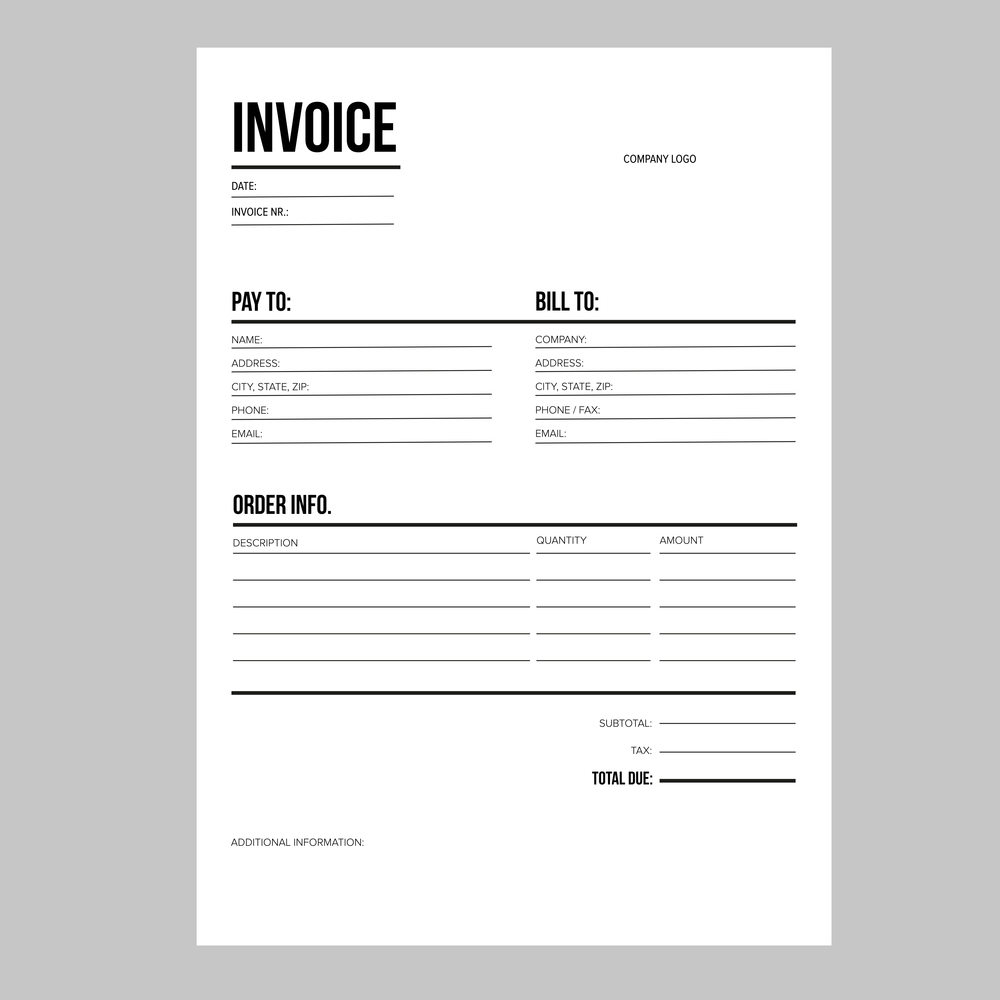The invoice header is a critical section of an invoice, as it provides essential details to both the sender and recipient at a glance. A well-structured invoice header ensures clarity and professionalism, facilitating easier tracking, record-keeping, and faster payment processing. This guide will explore the components of an effective invoice header, helping you understand its purpose and how to set it up for optimal use.
1. Essential Components of an Invoice Header
The invoice header usually contains the following key elements, each playing a crucial role in identifying and validating the invoice. These components are standard for most invoices, ensuring they meet business and legal requirements.
- Business Name and Logo: The name of the company issuing the invoice, along with a logo for brand recognition.
- Contact Information: Business address, phone number, and email for easy client communication.
- Invoice Number: A unique identifier to track the invoice, essential for record-keeping and resolving any potential disputes.
- Invoice Date: The date the invoice is issued, often relevant for payment timelines and deadlines.
- Due Date: The date by which payment is expected, helping both the sender and receiver manage cash flow effectively.
- Client Details: Client name and contact information, establishing the invoice’s recipient and ensuring it reaches the correct party.

2. Example Layout for an Invoice Header
To create a clear and organized invoice header, you can structure it as shown in this example. A well-organized layout helps clients easily locate and understand the invoice’s main details.
Invoice Header Layout Example
Here’s a sample layout that includes all essential elements:
| Your Company Logo | Your Company Name |
| Company Address | Invoice #: 12345 |
| Contact Number | Invoice Date: 2023-11-10 |
| Email Address | Due Date: 2023-12-10 |
| Client Name | Client Address |
3. Benefits of a Clear Invoice Header
Including a clear and comprehensive invoice header has multiple benefits:
- Professionalism: A well-organized header adds a professional appearance, reflecting positively on your business.
- Improved Payment Processing: By clearly displaying all key information, clients can easily process payments without confusion.
- Enhanced Tracking: With unique invoice numbers and dates, it’s easier to track payments and follow up if needed.
4. Additional Tips for Designing an Effective Invoice Header
When designing your invoice header, consider these tips to ensure optimal readability and functionality:
- Use Legible Fonts: Choose fonts that are easy to read and maintain consistency throughout the header.
- Highlight Key Details: Bold elements such as the invoice number and due date for quick reference.
- Maintain Consistency: Use the same layout and design for all invoices to strengthen brand identity and provide familiarity for repeat clients.
Conclusion
A well-designed invoice header is more than just an aesthetic choice; it’s a functional element that contributes to smooth business operations.
By including all necessary details and presenting them in a clear and organized manner, you make the invoicing process simpler and more professional for both you and your clients. Use the tips and layout examples in this guide to create an effective invoice header that promotes timely payments and fosters positive client relationships.





